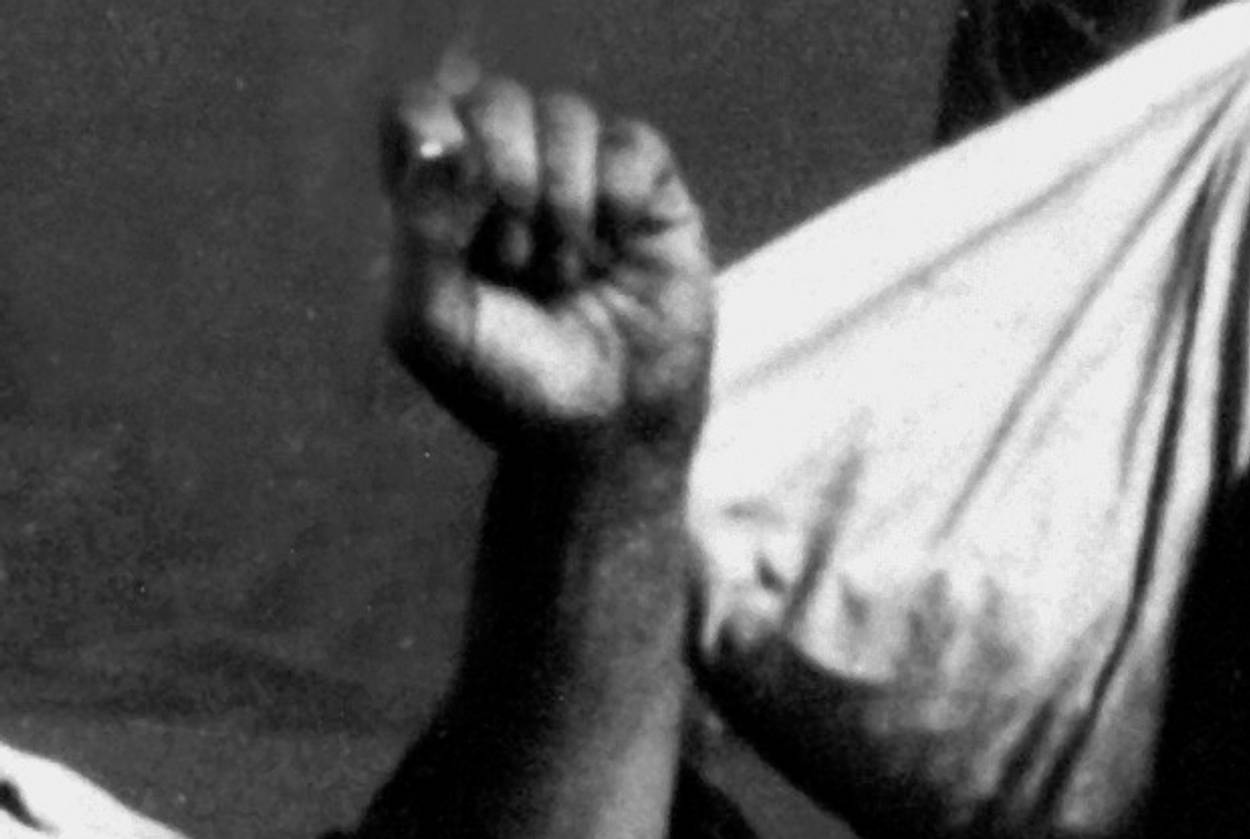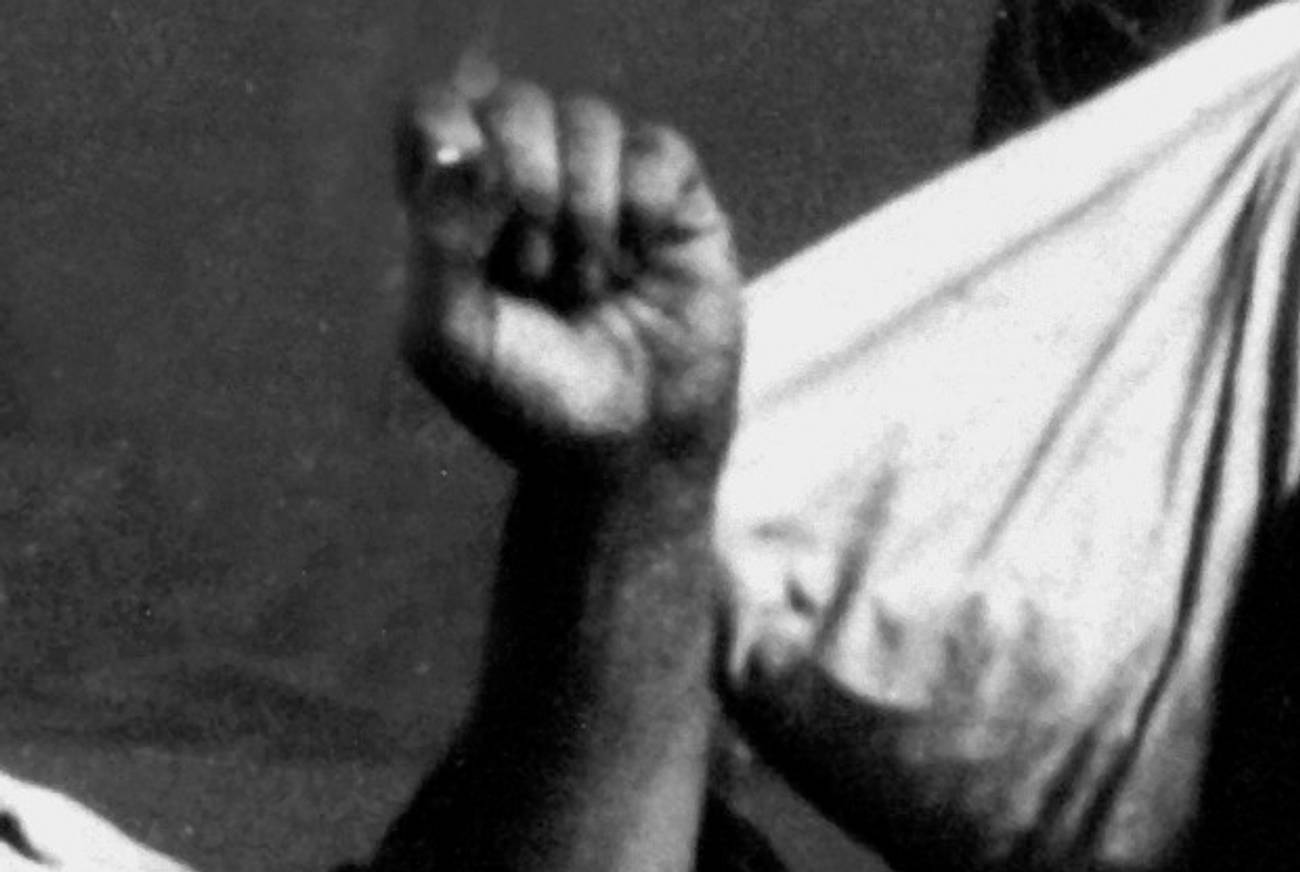Isaac Zuckerman Unbound
An excerpt from a dramatic new account of the young Jews behind the Warsaw Ghetto Underground




This is an excerpt from Isaac’s Army: A Story of Courage and Survival in Nazi-Occupied Poland by Matthew Brzezinski. In this section, Zivia Lubetkin, one of the leaders of the Jewish underground in Nazi-occupied Warsaw, and Isaac Zuckerman, the 24-year-old co-founder, along with Mark Edelman, of the Jewish Fighting Organization, first learn of the 1941 Vilna massacre, and consider the chances—and significance—of the violence coming to Warsaw.
News of the Vilna massacre spread rapidly through the Warsaw Ghetto. “We were shocked,” Zivia Lubetkin remembered. Zivia and Isaac [Zuckerman] called together young Socialist Zionists to their headquarters to discuss the troubling reports. Perhaps they were exaggerated, some skeptics posited. “We must assume that this was an awful act of revenge,” Isaac recalled someone speculating. “We know that some Jews welcomed the Red Army and made themselves hated by their neighbors.” The Lithuanians might have been incited to violence by the Germans. Besides, others questioned, how reliable was this information? The account was, after all, secondhand, relayed by a non-Zionist and a non-Jew. Could it even be trusted?
Zivia decided to find out for herself. She dispatched two of her most reliable couriers to Vilna, Frumka Plotnicka and Lonka Kozibrodska, the same messenger who had located Isaac at the Kampinos camp. “There was nowhere Lonka would not go. Nothing was impossible for her,” Zivia recalled admiringly. And Frumka was Zivia’s most trusted lieutenant. Hearing from them would be like seeing with her own eyes.
The Bund also convened an emergency meeting of its central committee to discuss the situation. “The craziest rumors were circulating,” Mark Edelman recalled. Alas, Bundists had even less to go on than Isaac and Zivia’s Zionists: What was the extent of the slaughter in Lithuania? Was it a pogrom? Or had the Germans committed the killings in reprisal for some perceived offense such as supposed Jewish loyalty to the Soviets? Was it a one-off event, the tragic by-product of ethnic tensions that flared up whenever the borderlands violently changed hands, as had been the case during the First World War? Or were there larger, more ominous implications for Jews in general?
“A lot of people refused to believe that this was anything more than an isolated incident,” Edelman recalled. He had been allowed to sit in while the [Bund’s] central committee met, a rare honor for a 22-year-old who was half the age of most other members and still “prone to childish bouts of fantasy and enthusiasm,” in the words of one superior. The privilege, however, did not extend to voicing any opinions, which proved frustrating. Perhaps it was the impatience of youth, but Edelman didn’t agree with the cautious skepticism of party elders like Maurice Orzech, Leon Feiner, Abrasha Blum, and, surprisingly, special ops chief Bernard Goldstein. While these colleagues counseled against jumping to conclusions or making any rash decisions, Edelman and some of the younger Bundists were already convinced that Hitler sought the annihilation of all Jews.
The elder and younger members of the Bund did agree on one thing, however—to delay action until they had gathered reliable information of their own. Asking the rival Zionists to share the report they had received from the Polish Boy Scouts was out of the question. Even the more impatient and impetuous Edelman, who, at the time, lived on the same street as Isaac and Zivia, never contemplated knocking on their clubhouse door to ask for help. “We were ideological rivals.” Instead, the Bund chose to duplicate the Zionists’ efforts to try to get a clearer picture of what was happening in the east.
Non-Jews were free to travel into the newly seized territories being incorporated into the General Government, so Bernard Goldstein reached out to a former trade union colleague, a man by the name of Runge, who had served as head of the Polish Federation of Labor before the war and was now active in the Polish Underground. In the past, Edelman would have acted as a go- between for this sort of message. His job at the Jewish hospital gave him a coveted Ghetto exit pass so he could deliver contaminated blood samples to laboratories on the Aryan side. This made him an ideal courier for the Bund, despite his pronounced Semitic features. He could legally leave the sealed district, and because he carried typhus samples, no one dared approach him on the streets of Warsaw for fear of infection—not even the police or anti-Semitic thugs; “I was like a leper.” Unfortunately his hospital pass had been recently revoked, and he had been relegated to cleaning up after autopsies of typhus victims. The disease had reached epidemic proportions by the fall of 1941, spreading from the horrifically overcrowded refugee shelters to the rest of the Ghetto. It would claim 14,449 lives by year’s end. Overwhelmed hospitals gave up on treating the ill and could only helplessly study the dead. “Their organs were translucent,” Edelman recalled. “My job was to sew up body cavities and dispose of the corpses.”
So with Edelman sidelined, the Bund had to find other ways of getting its message out. Leaving the Ghetto without a pass became infinitely more perilous on October 10, 1941, when Warsaw district governor Ludwig Fisher announced that henceforth any Jew caught outside the walls would be summarily executed. The death penalty, Fisher added in a statement published in the New Warsaw Courier two days later, would also apply to any Gentile harboring or lending assistance to Jews. “I instruct the entire population of the Warsaw District to draw careful attention to this latest decree because it will be administered with merciless severity,” he warned.
Despite the new death threat, Goldstein’s trade union friend agreed to gather the requested information and deliver his report in person. “Runge was smuggled into the ghetto with great care,” Goldstein recalled, and a meeting was arranged on Goose Street, near the district’s newly opened Jewish prison. Goldstein was hiding out in a safe house because the Gestapo had recently raided his apartment building on New Linden Avenue. While the two labor leaders talked, shots rang out from the nearby prison. Jews caught outside the Ghetto were being executed.
The rumors of widespread atrocities in the east, Runge reported, were true. In Vilna, a special pogrom unit of Lithuanians called the Ipatingas, or the Elect, had been created by the Germans. It was staffed with relatives of victims of Soviet repression, many of whom were told by the Germans that Jewish Bolsheviks were responsible for their family’s sufferings. In “revenge,” they killed, or helped the Germans kill, nearly a third of Vilna’s sixty thousand Jews. In other Lithuanian towns, the SS released violent criminals from jails and put them to work murdering Jews. In the Lithuanian capital of Kaunas, or Kovno as it was then also known in Polish, meting out “rightful punishment to collaborators and traitors” had become a spectator sport, according to eyewitnesses, complete with large crowds, “cheering and clapping.” Lithuanian children were lifted onto the shoulders of their parents to catch a glimpse of the famous “Death-dealer of Kovno,” a sight that one German regular army officer later described as the most frightful event he’d witnessed in the course of two world wars.
“On the concrete forecourt of the petrol station a blond man of medium height, aged about 25, stood leaning on a wooden club, resting,” the disgusted officer, a colonel in the Wehrmacht’s Army Group North, recounted. “The club was as thick as his arm and came up to his chest. At his feet lay about fifteen to twenty dead or dying people. Water flowed continuously from a hose washing blood away into the drainage gully. Just a few steps behind this man some twenty men, guarded by armed civilians, stood waiting for their cruel execution in silent submission. In response to a cursory wave the next man stepped forward silently and was beaten to death with the wooden club in the most bestial manner, each blow accompanied by enthusiastic shouts from the audience.”
Once the mound of Jewish bodies at his feet had reached fifty, the Death-dealer fetched an accordion, climbed to the top of the pile of corpses, and played the Lithuanian national anthem.
The wave of brutality was not confined to Lithuania. It ran the length of the old Pale of Settlement, the historically volatile borderlands between Poland and Russia, where Himmler had ordered local killing squads to be recruited “from the reliable non-Communist elements among Ukrainians, Estonians, Latvians, Lithuanians, and Byelorussians.” In Galicia, leaders of the Organization of Ukrainian Nationalists, the partisan group that had been long repressed by Polish authorities, went on Radio Berlin to declare “Death to Jews, death to Communists, death to Commissars, exactly in that sequence.” Then they went on a rampage, murdering seven thousand Jews in Lvov, 1,100 in Lutsk, 600 in Ternopol, and progressively spreading the terror to ever smaller towns until blood had been spilled throughout all of western Ukraine.
The absence of Poles from Himmler’s recruiting directive did not mean that the SS couldn’t count on Polish pogromists. In the town of Radzilow, Germans incited Polish peasants to murder eight hundred Jewish inhabitants on the worn pretext that Jews had denounced Gentiles to the Soviet secret police. In nearby Jedwabne, the same ploy was used to drive the hamlet’s entire Jewish population into its lone synagogue, which was then set ablaze.
For Edelman, who had already convinced himself that a wider campaign against the Jews was afoot, confirmation of the mass killings “was not shocking.” Runge’s report did not, however, conclusively answer the question that still racked senior Bundists: Was this orgy of violence fundamentally different from past waves of pogroms, which had flared in the east with tragic regularity for centuries? “That was part of the German genius,” Edelman later noted ruefully. The Bund decided to form and begin training a 500-member militia in the event that the Nazis tried to incite another, more lethal pogrom in Warsaw. Both Edelman and Berl Spiegel eagerly joined the fledgling self-defense organization. The unit was “mostly theoretical” at this early stage, Boruch Spiegel recalled; a list of names, a few lecture meetings, no real training to speak of. The only arms at the Bund’s disposal were truncheons and knives. These had always kept petty local thugs from the fascist Falanga and ONR at bay, but they clearly no longer sufficed.
In light of the scale and barbarity of the eastern atrocities, Bernard Goldstein had one additional request for his Gentile trade union colleague. Could he help the Bund get guns?
Excerpted from Isaac’s Army: A Story of Courage and Survival in Nazi-Occupied Poland by Matthew Brzezinski. Copyright © 2012 by Matthew Brzezinski. Reprinted by arrangement with Random House. All rights reserved.
***
Like this article? Sign up for our Daily Digest to get Tablet Magazine’s new content in your inbox each morning.
Matthew Brzezinski covered homeland security as a contributing writer for The New York Times Magazine. He is the author of Casino Moscow, Fortress America, and Red Moon Rising.
Matthew Brzezinski covered homeland security as a contributing writer for The New York Times Magazine. He is the author of Casino Moscow, Fortress America, and Red Moon Rising.